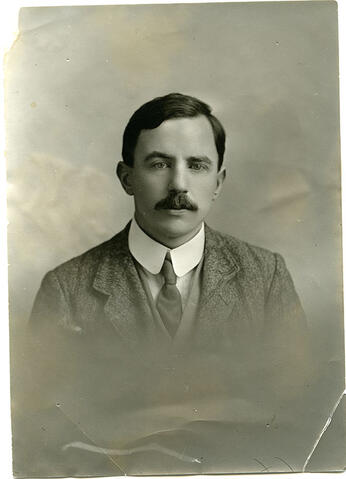
Área de título y declaración de responsabilidad
Título apropiado
Reginald J.G. Bateman - Portrait
Tipo general de material
- Graphic material
Título paralelo
Otra información de título
Título declaración de responsabilidad
Título notas
Nivel de descripción
Item
Institución archivística
Código de referencia
Área de edición
Declaración de edición
Declaración de responsabilidad de edición
Área de detalles específicos de la clase de material
Mención de la escala (cartográfica)
Mención de proyección (cartográfica)
Mención de coordenadas (cartográfica)
Mención de la escala (arquitectónica)
Jurisdicción de emisión y denominación (filatélico)
Área de fechas de creación
Fecha(s)
-
[between 1909 and 1914] (Criação)
Área de descripción física
Descripción física
1 photograph : b&w ; 10 x 14 cm
Área de series editoriales
Título apropiado de las series del editor
Títulos paralelos de serie editorial
Otra información de título de las series editoriales
Declaración de responsabilidad relativa a las series editoriales
Numeración dentro de la serie editorial
Nota en las series editoriales
Área de descripción del archivo
Nombre del productor
Historial de custodia
Alcance y contenido
Head and shoulders image of Reginald J.G. Bateman, first Professor of English, 1909-1918.
Bio/Historical Note: Reginald John Godfrey Bateman was born on 12 October 1883 in County Kerry, Ireland. He received his early education at Royal School, County Fermanagh, and both his B.A. (1906) and MA. (1909) from Trinity College. Shortly after graduation in 1909 Bateman immigrated to Canada and was hired as Professor of English at the University of Saskatchewan. He enlisted as a private in the 28th Battalion, Canadian Expeditionary Force (CEF), in September 1914 and served in France. In early 1916 the idea of a Western University Battalion took root. Initially the Canadian military was reluctant, but the combination of a strong lobbying campaign and the need for fresh troops to replace the mounting casualties in Europe tipped the scales. Bateman was sent back to Canada to raise a company of the 196th (Western Universities) Battalion. The 196th was to consist of a company from each of the four western provinces. Once formed, it trained at Camp Hughes in Manitoba and was then sent to England. The 196th’s history was brief. Once in England it was broken up to reinforce existing units. A high portion of the recruits eventually found themselves in the officers’ ranks. Many found themselves assigned to the Saskatchewan-dominated 46th Battalion. Also known as the "Suicide Battalion," it fought in some of the bloodiest encounters of the war. Reinforcements were constantly needed as battle after battle decimated its ranks. Of the 5,374 men in the 46th Battalion, 4,917 were either killed or wounded. With the end of the war came demobilization and the end of the 46th Battalion. Reginald Bateman did not return. He was killed near Dury, France on 3 September 1918.
Área de notas
Condiciones físicas
Origen del ingreso
Arreglo
Idioma del material
Escritura del material
Ubicación de los originales
Disponibilidad de otros formatos
Restricciones de acceso
Condiciones de uso, reproducción, y publicación
Copyright: Public domain
Other terms: Responsibility regarding questions of copyright that may arise in the use of any images is assumed by the researcher.

